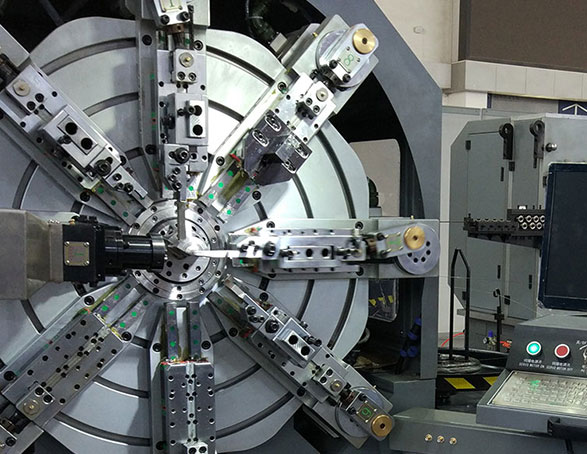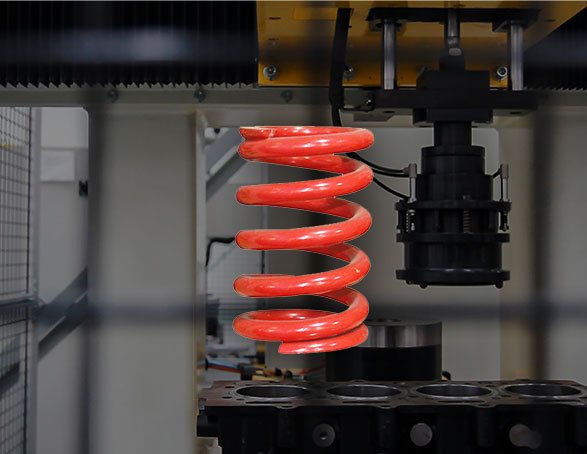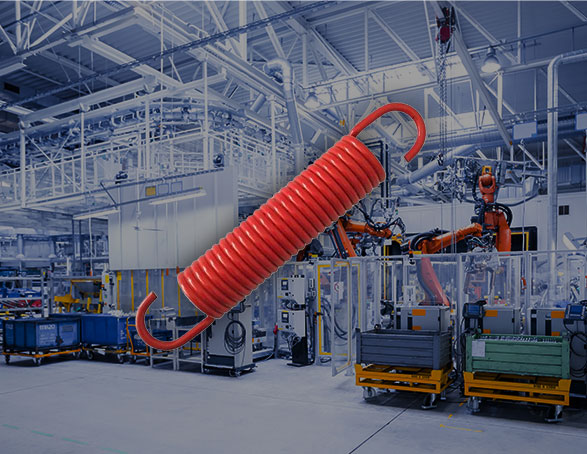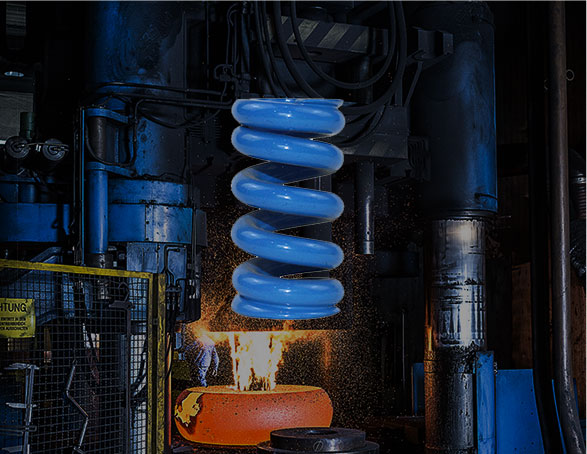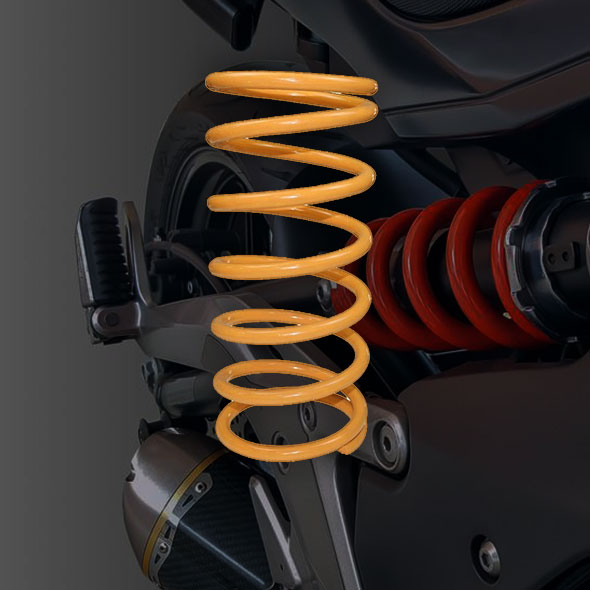Zhejiang Jinchang spring Co., Ltd.
Shaoxing - Zhuji - Zhejiang Jinchang spring Co., Ltd. - hot coil cylindrical helical compression spring - draft standard
- Categories:Company news
- Author:
- Origin:
- Time of issue:2020-09-04 10:23
- Views:
(Summary description)Hot coil cylindrical helical compression spring for high voltage switch
Shaoxing - Zhuji - Zhejiang Jinchang spring Co., Ltd. - hot coil cylindrical helical compression spring - draft standard
(Summary description)Hot coil cylindrical helical compression spring for high voltage switch
- Categories:Company news
- Author:
- Origin:
- Time of issue:2020-09-04 10:23
- Views:
ICS 21.160
21.160
Chinese standard
T/ZZB XXXX—XXXX
ICS 21.160
Chinese standard
T/ZZB XXXX—XXXX
Hot coil cylindrical helical compression spring for high voltage switch
Hot coiled helical compression springs for high voltage switch
XXXX - XX - XX issued
XXXX - XX - XX implementation
Issued by Zhejiang brand building Federation
Group standard
Item order
Preamble III
1 Scope 1
2 normative references 1
3 terms and definitions 2
4 basic requirements 2
5 technical requirements 2
6 test method 4
7 inspection rules 5
8 marking, packaging, transportation and storage 6
9 quality commitment 6
Previous remarks
This standard is drafted according to the rules given in GB / T 1.1-2020.
Some contents of this standard may involve patents, and the publisher of this standard does not bear the responsibility to identify these patents.
This standard is proposed and managed by Zhejiang brand building Federation.
This standard is organized and formulated by Zhejiang Institute of standardization.
This standard is mainly drafted by Zhejiang Jinchang spring Co., Ltd.
This standard was drafted by Zhejiang Mingfeng spring Co., Ltd.
Main drafter of this standard: Fei Qingmin.
Leader of the standard review expert: XXX.
This standard is interpreted by XXXXXXXX.
Hot coil cylindrical helical compression spring for high voltage switch
Range
This standard specifies the scope, normative references, terms and definitions, basic requirements, technical requirements, test methods, inspection rules, marks, packaging, transportation, storage and quality commitment of hot-rolled cylindrical compression springs.
This standard is applicable to the springs used for high-voltage switches and within the following size range. The springs beyond this size range can be used by reference after negotiation between the supplier and the buyer:
——Free height: ≤ 900mm
——Winding ratio: 3 ~ 12;
——Height diameter ratio: 0.8 ~ 4;
——Number of effective turns: ≥ 3 turns;
——Pitch: < 0.5d;
——Material diameter: 8mm ~ 60mm;
——Pitch diameter of spring: ≤ 460mm.
Normative references
The following documents are essential for the application of this document. For dated references, only the dated version is applicable to this document. For undated references, the latest version (including all amendments) is applicable to this document.
GB / T 224-2008 determination of decarburization depth of steel
GB / T 230.1-2009 metallic materials Rockwell hardness test Part 1: Test methods
GB / T 231.1-2009 metallic materials Brinell hardness test Part 1: Test methods
GB / T 702-2017 hot rolled steel bars - Dimensions, shapes, weights and tolerances
GB / T 1805-2001 spring terminology
GB / T 6394-2017 determination of average grain size of metals
GB / T # 8170-2008 # rules for rounding off values and expression and determination of limit values
GB / T 31214.1-2014 spring shot peening Part 1: General rules
GB / T 10802-2007 technical specification for spring shot peening
ISO 683-14-2004 - heat treated, alloy and easy cut steels - Part 14: hot rolled steels for Quenched and tempered springs
ISO 9588-2007 metallic and other inorganic coatings - post coating treatment of iron and steel to reduce the risk of hydrogen embrittlement
GB / T 1222-2016 spring steel
GB / T 30512-2014 requirements for prohibited substances in automobiles
GB / T 7367-2013 magnetic particle testing method for cylindrical helical compression springs
GB / T # 23934-2015 # hot rolled cylindrical helical compression springs for high voltage switchgear # technical conditions
GB / T 13298-2015 test method for microstructure of metals
GB / T 16947-2009 - fatigue test code for coil springs
GB / T # 2827.1-2012 sampling procedures for inspection by attributes # Part 1: sampling plans for batch inspection retrieved by acceptance quality limit (AQL)
Terms and definitions
The terms and definitions defined in GB / T 1805-2001 are applicable to this document.
Basic Requirements
Design and R & D
Develop design software for lightweight design and complete design optimization.
Stress shot peening and heating standing treatment to improve the residual stress of the spring;
The secondary strengthening shot peening process is adopted to improve the fatigue resistance of the spring, and the rapid tempering with new equipment is studied;
Advanced technologies such as water quenching are used in the study of material heat treatment.
raw material
Material selection
The spring shall be made of alloy steel in GB / T # 1222 or materials specified in ISO # 683-14-2004.
Hot rolled bar
Hot rolled bars with diameter limit deviation conforming to group 1 or group 2 of GB / T 702-2017 shall be selected.
Cold working (cold drawing, turning, peeling, grinding)
Cold worked bars with diameter limit deviation in accordance with table 1 shall be selected.
Diameter limit deviation of cold worked bar
Hot coil cylindrical helical compression spring for high voltage switch
Hot coiled helical compression springs for high voltage switch
XXXX - XX - XX issued
XXXX - XX - XX implementation
Issued by Zhejiang brand building Federation
Group standard
Item order
Preamble III
1 Scope 1
2 normative references 1
3 terms and definitions 2
4 basic requirements 2
5 technical requirements 2
6 test method 4
7 inspection rules 5
8 marking, packaging, transportation and storage 6
9 quality commitment 6
Previous remarks
This standard is drafted according to the rules given in GB / T 1.1-2020.
Some contents of this standard may involve patents, and the publisher of this standard does not bear the responsibility to identify these patents.
This standard is proposed and managed by Zhejiang brand building Federation.
This standard is organized and formulated by Zhejiang Institute of standardization.
This standard is mainly drafted by Zhejiang Jinchang spring Co., Ltd.
This standard was drafted by Zhejiang Mingfeng spring Co., Ltd.
Main drafter of this standard: Fei Qingmin.
Leader of the standard review expert: XXX.
This standard is interpreted by XXXXXXXX.
Hot coil cylindrical helical compression spring for high voltage switch
1. Scope
This standard specifies the scope, normative references, terms and definitions, basic requirements, technical requirements, test methods, inspection rules, marks, packaging, transportation, storage and quality commitment of hot-rolled cylindrical compression springs.
This standard is applicable to the springs used for high-voltage switches and within the following size range. The springs beyond this size range can be used by reference after negotiation between the supplier and the buyer:
——Free height: ≤ 900mm
——Winding ratio: 3 ~ 12;
——Height diameter ratio: 0.8 ~ 4;
——Number of effective turns: ≥ 3 turns;
——Pitch: < 0.5d;
——Material diameter: 8mm ~ 60mm;
——Pitch diameter of spring: ≤ 460mm.
1. Normative references
The following documents are essential for the application of this document. For dated references, only the dated version is applicable to this document. For undated references, the latest version (including all amendments) is applicable to this document.
GB / T 224-2008 determination of decarburization depth of steel
GB / T 230.1-2009 metallic materials Rockwell hardness test Part 1: Test methods
GB / T 231.1-2009 metallic materials Brinell hardness test Part 1: Test methods
GB / T 702-2017 hot rolled steel bars - Dimensions, shapes, weights and tolerances
GB / T 1805-2001 spring terminology
GB / T 6394-2017 determination of average grain size of metals
GB / T # 8170-2008 # rules for rounding off values and expression and determination of limit values
GB / T 31214.1-2014 spring shot peening Part 1: General rules
GB / T 10802-2007 technical specification for spring shot peening
ISO 683-14-2004 - heat treated, alloy and easy cut steels - Part 14: hot rolled steels for Quenched and tempered springs
ISO 9588-2007 metallic and other inorganic coatings - post coating treatment of iron and steel to reduce the risk of hydrogen embrittlement
GB / T 1222-2016 spring steel
GB / T 30512-2014 requirements for prohibited substances in automobiles
GB / T 7367-2013 magnetic particle testing method for cylindrical helical compression springs
GB / T # 23934-2015 # hot rolled cylindrical helical compression springs for high voltage switchgear # technical conditions
GB / T 13298-2015 test method for microstructure of metals
GB / T 16947-2009 - fatigue test code for coil springs
GB / T # 2827.1-2012 sampling procedures for inspection by attributes # Part 1: sampling plans for batch inspection retrieved by acceptance quality limit (AQL)
1. Terms and definitions
The terms and definitions defined in GB / T 1805-2001 are applicable to this document.
1. Basic requirements
1. Design and R & D
Develop design software for lightweight design and complete design optimization.
Stress shot peening and heating standing treatment to improve the residual stress of the spring;
The secondary strengthening shot peening process is adopted to improve the fatigue resistance of the spring, and the rapid tempering with new equipment is studied;
Advanced technologies such as water quenching are used in the study of material heat treatment.
1. Raw materials
1. Material selection
The spring shall be made of alloy steel in GB / T # 1222 or materials specified in ISO # 683-14-2004.
1. Hot rolled bar
Hot rolled bars with diameter limit deviation conforming to group 1 or group 2 of GB / T 702-2017 shall be selected.
1. Cold working (cold drawing, turning, peeling and grinding)
Cold worked bars with diameter limit deviation in accordance with table 1 shall be selected.
1. Diameter limit deviation of cold worked bar
|
Diameter(mm) |
Limit deviation |
|
8≤d<12.5 |
±0.06 |
|
12.5≤d<26 |
±0.08 |
|
26≤d<48 |
±0.10 |
|
48≤d≤60 |
±0.15 |
1. Process and equipment
1. The spring shall be subject to stress relief tempering and surface strengthening treatment, and the hardness of heat treatment shall be assessed.
2. Springs with compressive stress ≥ 0.45rm shall be subject to normal temperature / heating standing treatment or strong pressure treatment.
3. The spring shall be subject to surface shot peening after spring grinding according to the requirements of GB / T # 31214.1 and JB / T # 10802.
4. Finite element analysis, spectrum analyzer and corresponding analysis equipment.
5. The spring shall be tested for hardness after heat treatment, and its hardness shall meet the drawing requirements. At the same time, the hardness difference of the same batch shall be less than 3 HRC units.
6. It shall be tempered troostite (oil quenched and tempered material), and a small amount of sorbite is allowed.
7. Decarburization of harmful substances is not allowed on the spring surface.
8. The original austenite grain size grade of spring products is generally no less than 5.
9. The spring shall be subject to shot peening strengthening treatment. The shot peening treatment shall be carried out according to GB / T # 31214.1 and JB / T # 10802-2007. The shot peening strength is (0.35 ~ 0.55) a and the shot peening coverage is ≥ 90%.
2. Detection capability
It shall be capable of inspecting spring hardness, metallographic structure, decarburization, appearance and size, limit deviation of spring characteristics, grain size, shot peening and permanent deformation.
1. Technical requirements
1. Appearance and size
1. Appearance
The spring surface is not allowed to have harmful defects such as folds, grooves, cracks, hair lines and oxide scales that affect the use.
1. Dimensional deviation
1. Free height
The free height is for reference only when specifying the load at the specified height or the spring characteristics at the specified load height. If the load at the specified height or the spring characteristics of the height under the specified load are not specified, the limit deviation of the free height shall be as specified in Table 2, and the absolute value between the calculated value and the minimum value in the table shall be taken as the larger one for the same level.
1. Limit deviation of free height
|
Grade |
Level |
Level 2 |
Level 3 |
|
Limit deviation |
±1.5%H0, Min.±2.0mm |
±2%H0, Min.±3.0mm |
±3%H0, Min.±4.0mm |
1. Spring diameter
The outer diameter or inner diameter of the spring shall be checked according to the purpose, and its limit deviation is shown in Table 3; At the same level, the absolute value between the calculated value and the minimum value in the table shall be taken as the larger one.
1. Limit deviation of spring outer diameter or inner diameter
|
Grade |
Level |
Level 2 |
Level 3 |
|
Limit deviation |
±1.0%D Min.±1.5mm |
±1.5%D Min.±2.0mm |
±2.0%D Min.±2.5mm |
1. Verticality
The spring can check the perpendicularity of both ends or the perpendicularity and parallelism based on one end. When either end is the inspection benchmark, the tolerance requirements shall be met.
The vertical tolerance of the outer side to the end face in the free state shall be as specified in Table 4.
1. Perpendicularity tolerance of outer face to end face
|
Grade |
Level |
Level 2 |
Level 3 |
|
Ho≤500mm |
2% Ho |
2.5% Ho |
4% Ho |
|
Ho>500mm |
2.5% Ho |
4% Ho |
6% Ho |
1. Crimping height
When the deformation corresponding to the spring working load F2 is greater than 85% of the total deformation, the assessment of the pressure merging height shall be increased, and the pressure merging height shall be less than or equal to (total number of turns - 0.3) × Wire diameter. When the spring is made of special-shaped cross-section material, while meeting other geometric dimensions, the assessment of pressure and height shall be increased, which shall be less than or equal to (total number of turns - 0.3) × Material cross section minor axis size.
1. Pitch uniformity
When the equal pitch spring is compressed to 80% of the total deformation, the effective coils shall not contact each other.
1. The load when the spring is compressed to 80% of the total deformation shall not be greater than the experimental load.
1. Spring characteristic limit deviation
1. Height limit deviation under specified load
The height limit deviation under the specified load shall be in accordance with the provisions of table 5, and the limit deviation at the same level shall take the larger absolute value between the calculated value and the minimum value.
1. Height limit deviation under specified load
|
Grade |
Level |
Level 2 |
Level 3 |
|
Limit deviation(mm) |
±0.05f Min.±2.5 |
±0.10f Min.±5 |
±0.15f Min.±7.5 |
1. Load limit deviation at specified height
The load limit deviation at the specified height shall be as specified in Table 6, and the limit deviation at the same level shall be the larger absolute value between the calculated value and the minimum value.
1. Load limit deviation at specified height
|
Grade |
Level |
Level 2 |
Level 3 |
|
Limit deviation(N) |
±0.05F The minimum value shall be±f×F’ |
±0.10F The minimum value shall be±f×F’ |
±0.15F The minimum value shall be±f×F’ |
|
|||
1. Limit deviation of spring stiffness
The limit deviation of spring stiffness shall be ± 10% f '. When the spring stiffness limit deviation is specified, the height limit deviation under the specified load or the load limit deviation under the specified height are generally no longer specified.
1. Hot compression set
The permanent deformation of hot compression of the spring shall not be greater than 5% of the free height.
1. Restrictions on hazardous substances
The limits of cadmium, lead, chromium and hexavalent chromium shall comply with the provisions of GB / T 30512.
1. Fatigue life
The spring shall undergo fatigue test, and its cycle times shall not be less than 20000 times. It is not allowed to break after fatigue test, and the loss rate of working load F2 shall be less than or equal to 0.5%.
1. Total number of turns
The limit deviation of the total number of turns is ± 1 / 4 turn
1. End face uniformity
|
Grade |
Level |
Level 2 |
Level 3 |
|
Tolerance |
2.0%D2 |
3.0%D2 |
3.5%D2 |
1. Parallelism tolerance
When the perpendicularity of both ends of the spring is specified, the parallelism is not considered. Select a section of perpendicularity and parallelism as the tolerance assessment. The parallelism tolerance between the two end ring planes shall be in accordance with table 7.
1. Parallelism tolerance
|
Grade |
Level |
Level 2 |
Level 3 |
|
Tolerance |
2.6%D2 |
3.5%D2 |
3.5%D2 |

More information
Quick links
Contact
Online Message
Domestic mailbox:jinchang@zjspring.com
International mailbox:export@zjspring.com
Address: No. 8, Wangyun West Road, Zhuji City, Zhejiang Province
Copyright: Zhejiang Jinchang spring Co., Ltd. 浙ICP备17002341号-1 Powered by 300.cn




